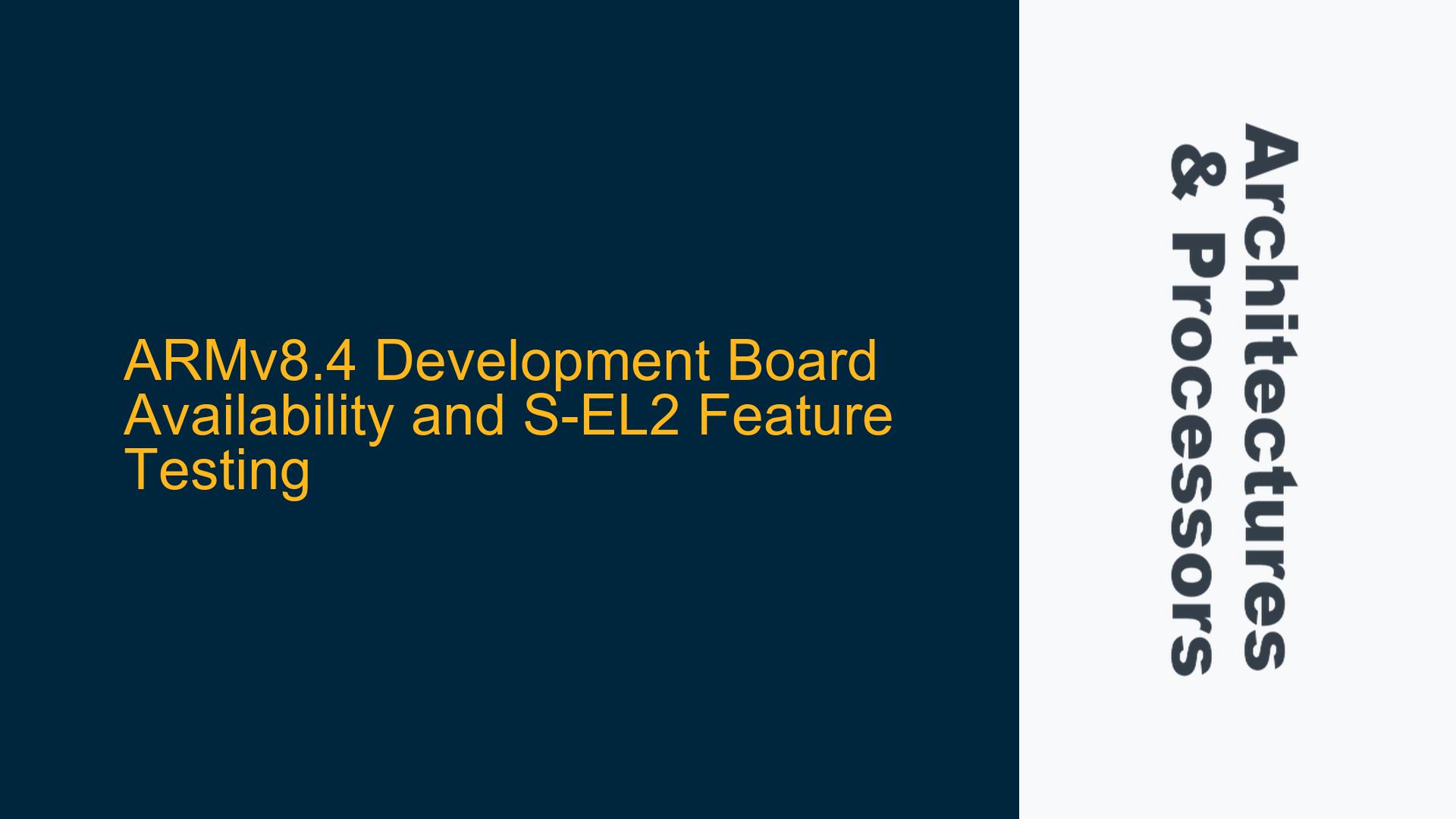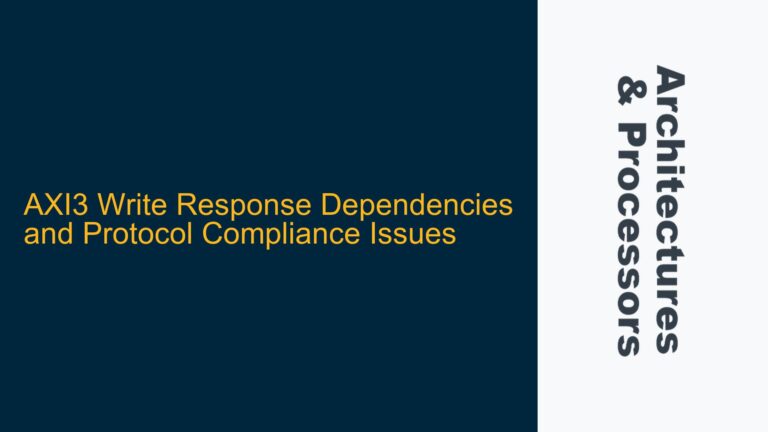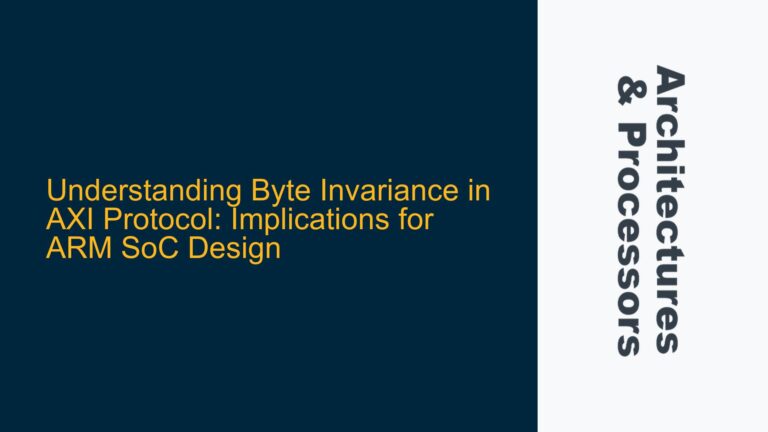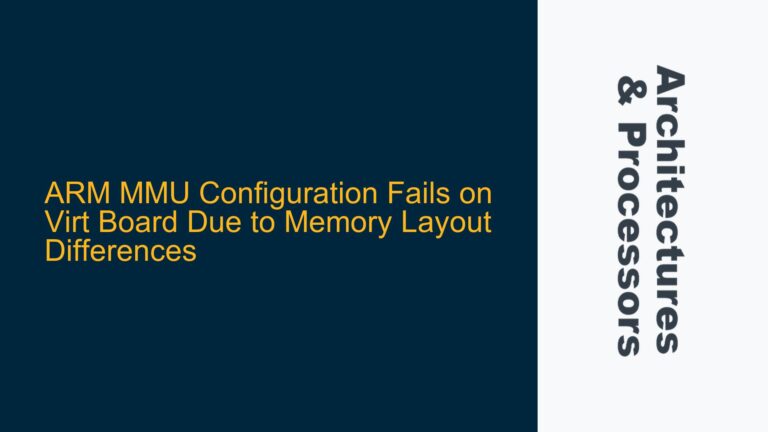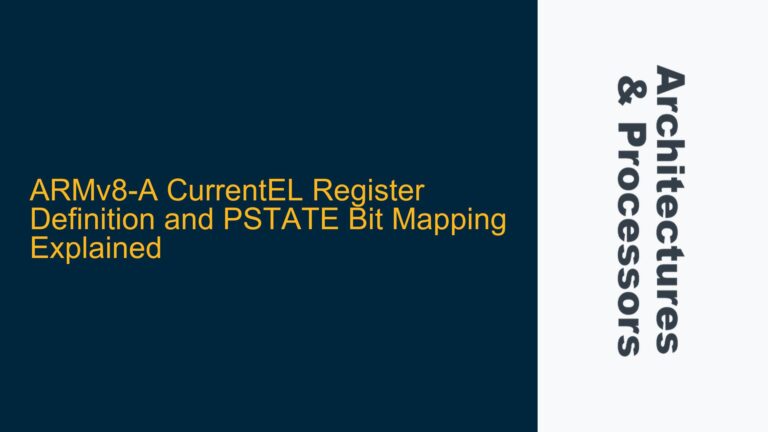ARMv8.4 and S-EL2: Understanding the Requirements and Challenges
ARMv8.4 is an extension of the ARMv8-A architecture, introducing several new features aimed at enhancing security, virtualization, and performance. One of the key features in ARMv8.4 is the Secure EL2 (S-EL2) exception level, which provides an additional layer of security for hypervisors in secure environments. S-EL2 allows for the isolation of secure virtual machines (VMs) from non-secure VMs, thereby improving the overall security posture of the system. However, the implementation of ARMv8.4, particularly S-EL2, requires specific hardware and software support, which is not universally available across all ARM-based development boards.
The Juno R2 development board, which is based on the ARMv8-A architecture, does not support ARMv8.4 features, including S-EL2. This limitation poses a challenge for developers who wish to experiment with or develop software that leverages these advanced features. The absence of ARMv8.4 support in widely available development boards can be attributed to several factors, including the relatively recent introduction of the ARMv8.4 specification, the complexity of implementing S-EL2 in hardware, and the niche market for such specialized development environments.
To address the need for ARMv8.4 development boards, it is essential to understand the specific requirements for S-EL2 and the broader ARMv8.4 feature set. S-EL2 introduces new system registers, exception handling mechanisms, and memory management capabilities that are not present in earlier versions of the ARM architecture. These features require corresponding support in the hardware, such as additional translation tables, secure memory regions, and enhanced virtualization capabilities. Furthermore, the software stack, including the hypervisor and operating system, must be updated to take advantage of these new features.
Given these requirements, the development of an ARMv8.4-compatible board involves significant engineering effort, including the design of custom silicon, the integration of secure boot mechanisms, and the development of a comprehensive software ecosystem. This complexity, combined with the relatively small market for such specialized hardware, has limited the availability of ARMv8.4 development boards. However, there are alternative approaches that developers can take to experiment with ARMv8.4 features, including the use of emulators and FPGA-based solutions.
Exploring Alternatives: Emulators and FPGA-Based Solutions for ARMv8.4 Testing
In the absence of commercially available ARMv8.4 development boards, developers can turn to emulators and FPGA-based solutions to test and develop software that leverages ARMv8.4 features, including S-EL2. Emulators, such as QEMU, provide a virtualized environment that can simulate the behavior of ARMv8.4 processors, allowing developers to experiment with new features without the need for physical hardware. FPGA-based solutions, on the other hand, offer a more hardware-centric approach, enabling the implementation of custom ARMv8.4-compatible processors on programmable logic devices.
QEMU is a widely used open-source emulator that supports a variety of architectures, including ARM. While QEMU does not natively support all ARMv8.4 features, it can be extended to include S-EL2 and other ARMv8.4-specific capabilities. This extension typically involves modifying the QEMU source code to add support for new system registers, exception levels, and memory management features. Once these modifications are in place, developers can use QEMU to run and test software that targets ARMv8.4, including hypervisors and operating systems that leverage S-EL2.
FPGA-based solutions offer a more flexible and powerful alternative to emulators. By implementing an ARMv8.4-compatible processor on an FPGA, developers can create a custom development board that meets their specific requirements. This approach involves designing the processor core, integrating it with peripherals, and developing the necessary software tools to program and debug the system. FPGA-based solutions are particularly well-suited for developers who require high-performance and low-latency environments, as they allow for the direct execution of ARMv8.4 instructions on hardware.
One of the key advantages of FPGA-based solutions is the ability to iterate quickly on hardware designs. Developers can modify the processor architecture, add new features, and test different configurations without the need for expensive and time-consuming silicon fabrication. This flexibility makes FPGA-based solutions an attractive option for research and development projects that require ARMv8.4 support. However, it is important to note that FPGA-based solutions also come with their own set of challenges, including the need for specialized knowledge in hardware design, the complexity of integrating multiple components, and the potential for increased development costs.
Building a Custom ARMv8.4 Development Environment: Steps and Considerations
For developers who require a more tailored solution, building a custom ARMv8.4 development environment may be the best option. This approach involves selecting the appropriate hardware components, developing the necessary software tools, and integrating everything into a cohesive system. While this process can be complex and time-consuming, it offers the greatest level of control and flexibility, allowing developers to create a development environment that meets their specific needs.
The first step in building a custom ARMv8.4 development environment is to select the appropriate processor. While there are currently no commercially available ARMv8.4 processors, developers can choose from a range of ARMv8-A processors that offer similar features and capabilities. These processors should be evaluated based on their performance, power consumption, and support for virtualization and security features. Once a processor has been selected, the next step is to design the development board, including the selection of memory, storage, and peripherals.
The design of the development board should take into account the specific requirements of ARMv8.4, including the need for secure memory regions, additional translation tables, and enhanced virtualization capabilities. This may involve the use of specialized components, such as secure enclaves or hardware-based memory protection units. Once the hardware design is complete, the next step is to develop the software tools needed to program and debug the system. This includes the development of a bootloader, a hypervisor, and an operating system that supports ARMv8.4 features.
The bootloader is responsible for initializing the hardware and loading the hypervisor or operating system. It must be designed to support the secure boot process, ensuring that only trusted software is executed on the system. The hypervisor, which manages the virtual machines, must be updated to support S-EL2 and other ARMv8.4-specific features. This may involve modifying the hypervisor’s memory management, exception handling, and scheduling algorithms. Finally, the operating system must be ported to the new hardware and updated to take advantage of ARMv8.4 features, such as enhanced security and virtualization capabilities.
Once the software tools are in place, the final step is to integrate everything into a cohesive system. This involves testing the hardware and software components, identifying and resolving any issues, and optimizing the system for performance and reliability. The development environment should be thoroughly tested to ensure that it meets the requirements for ARMv8.4 development, including support for S-EL2 and other advanced features.
In conclusion, while there are currently no commercially available ARMv8.4 development boards, developers have several options for testing and developing software that leverages ARMv8.4 features. These options include the use of emulators, FPGA-based solutions, and custom development environments. Each approach has its own set of advantages and challenges, and the choice of which to use will depend on the specific requirements of the project. By carefully evaluating these options and selecting the most appropriate solution, developers can create a development environment that meets their needs and allows them to take full advantage of the advanced features offered by ARMv8.4.
